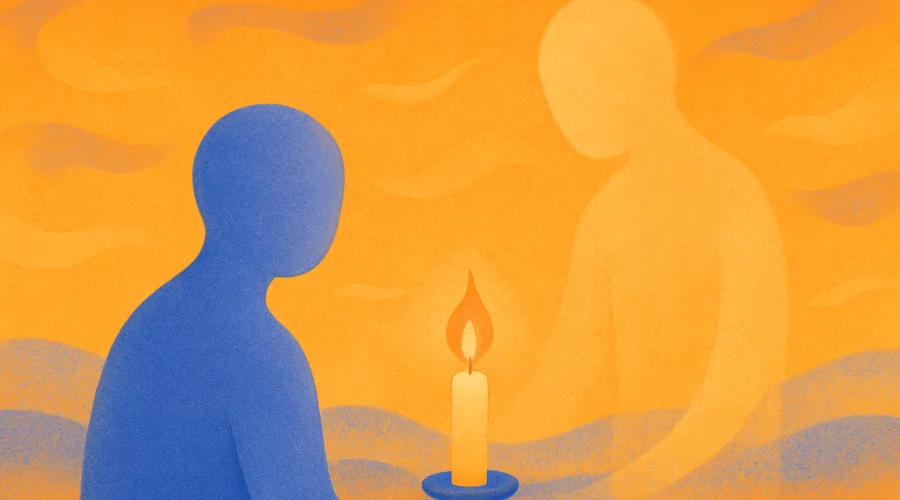
In the course of my practice, I am regularly called upon to accompany this period that begins after a death and that we call grief. These are deeply emotional moments of intimacy, when death bursts into the psyche and disrupts its defense mechanisms.
Last April, I took a training course on grief support. Here is what I would like to share with you:
We spend our lives losing things, relationships. Loss, like death, is part of life. And yet, even if death is part of life, supporting a grieving person is particularly delicate. Brief and systemic therapy invites us to give meaning back to lost bonds without freezing the pain.
Talking about death does not make it come.
Grief is not an illness to be cured but a process to be supported. It is neither forgetting nor erasing — it is the act of remembering and coming to terms with absence, reorganizing one’s life around an absence that has become internal.
The manifestations of mourning vary depending on the culture.
The expression of sadness varies across cultures. And it is within this process that rituals and a supportive presence during critical moments are important. The famous “grief curve” by Elisabeth Kübler-Ross is less widely accepted today, as this stage-based classification is, on the one hand, a limiting concept, and on the other, too focused on grief manifestations in Western populations. For example, we now prefer to speak of adaptation rather than acceptance.
Experiencing the death of a loved one can lead us through a period of vulnerability, triggering reactions of mild or severe stress, and various expressions of internalized or externalized disorders. Depending on the situation, it is important to consider the timing of these reactions, recognizing that each individual lives a unique story.
There are several types of grief :
So-called “anticipated” or “adjusted” grief, complicated or “difficult” grief, possibly even chronic grief, as well as traumatic grief, post-traumatic or pathological grief.
They are linked to context — whether it is a violent, unexpected, intentional, or “anticipated” death (illness, old age), whether we witnessed it or not, whether it occurred from a distance, in one’s own country or abroad. Grief will be experienced differently depending on the age of the bereaved person, the level of attachment bond, and any individual or family trauma history, if present. The presence of the body, its condition, or its absence are also impactful elements to take into account.
In therapy, we will name things, welcome them, learn to manage our fears, accompany to support, authorize, restore, and above all take the time.
In systemic therapy, grief is never experienced alone: it is woven into a network of relationships, stories, and rituals. It is this fabric that we aim to support and transform by co-constructing something lasting that sustains the mobilization of the bereaved person's resources.
Merci Anne Sophie pour cet article éclairant qui montre bien comment la thérapie brève et systématique peut aider dans ces moments difficiles. Votre article est un bon résumé du processus de deuil.